Gabriel García Márquez’s Chronicle of a Death Foretold is a captivating tale blending mysticism and reality, offering insights into human nature, fate, and societal expectations.
1.1 Overview of the Book
Chronicle of a Death Foretold by Gabriel García Márquez is a poignant and intricate narrative that unfolds in a small, unnamed Latin American town. The story revolves around the premeditated murder of Santiago Nasar, a young man accused of dishonoring a prominent family. Through a non-linear structure, the novel reconstructs the events leading to the tragic conclusion, blending myth, culture, and fate. The book explores themes of honor, guilt, and destiny, while its lyrical prose and rich imagery captivate readers. The PDF version of this masterpiece offers a convenient way to engage with the text, preserving the original’s depth and emotional resonance.
1.2 Importance of the PDF Version
The PDF version of Chronicle of a Death Foretold offers unparalleled accessibility, allowing readers to engage with the novel anytime, anywhere. Its digital format ensures crisp, readable text and easy navigation. Features like search functionality and bookmarking enhance the reading experience, making it ideal for academic or casual reading. The PDF preserves the original formatting and structure of the book, maintaining the author’s intended aesthetic. Additionally, it provides a space-saving alternative to physical copies while retaining the emotional depth and complexity of the narrative. This version is particularly popular among students and researchers for its convenience and ease of access.
1.3 Brief Summary of the Plot
Chronicle of a Death Foretold recounts the tragic tale of Santiago Nasar, whose murder is foretold yet inescapable. The story unfolds in a small Colombian town, where Angela Vicario is returned to her family on her wedding night due to Bayardo San Román’s discovery of her lost virginity. This dishonor prompts Angela’s brothers, Pedro and Pablo Vicario, to vow vengeance against Santiago, who is falsely accused of defiling her. Despite widespread knowledge of the impending murder, no one intervenes to stop it. The novel masterfully weaves fate, honor, and societal norms, culminating in Santiago’s brutal death and the haunting realization of a tragedy foreseen yet unprevented.
1.4 Themes and Symbolism
The novel explores themes of fate, honor, guilt, and love, intertwined with symbolic elements that enrich its narrative. The color yellow symbolizes impending doom, while the knives represent both honor and destruction. The bishop’s visit signifies divine judgment, contrasting with societal norms. These symbols highlight the tension between destiny and human responsibility, central to the story’s tragic unfolding. By weaving these elements, García Márquez creates a layered tale that probes deeper into human nature and cultural traditions.
Plot Analysis
The novel unfolds in a small Colombian town, recounting the events surrounding Santiago Nasar’s murder, sparked by a broken wedding vow and a deadly family honor dispute.
2.1 Setting of the Story
The story unfolds in a small, unnamed Colombian town, steeped in tradition and isolated from the outside world. The setting is deeply rooted in the early 20th century, reflecting a rigid societal structure and cultural norms. The town’s geography, with its dusty streets and oppressive heat, creates an atmosphere of claustrophobia and inevitability. The isolation of the community amplifies the tension, as rumors and gossip spread quickly, shaping the characters’ actions. The physical environment mirrors the emotional and psychological state of the townspeople, adding depth to the unfolding tragedy. This setting plays a crucial role in shaping the narrative’s tone and the characters’ fates.
2.2 Main Characters and Their Roles
The novel revolves around Santiago Nasar, a wealthy bachelor whose tragic fate is foretold, and the Vicario brothers, who seek to defend their family’s honor. Angela Vicario, the rejected bride, plays a central role in unfolding events, while Bayardo San Román, the groom, remains an enigmatic figure. Each character’s actions and decisions drive the narrative, exploring themes of honor, guilt, and destiny. Their roles intertwine to create a complex tapestry of societal expectations and personal responsibility.
2.3 The Tragic Event: Santiago’s Death
The death of Santiago Nasar is the pivotal event of the novel, foretold yet unavoidable. The Vicario brothers, driven by a misguided sense of honor, ruthlessly stab Santiago at the town’s docks. Despite the prophecy and widespread awareness, no one intervenes, highlighting the community’s complicity. Santiago’s final moments are marked by both dignity and terror, as he faces his fate. His death serves as a haunting critique of societal norms and the destructive power of unchecked traditions. The event leaves a lasting scar on the town, sparking guilt and reflection among its inhabitants.
2.4 The Prophecy and Its Fulfillment
The prophecy of Santiago Nasar’s death serves as a central motif, weaving fate and inevitability into the narrative. The townspeople, aware of the ominous warnings, resign themselves to the predicted outcome, showcasing a collective fatalism. Santiago, though informed of the danger, chooses to ignore it, embodying a tragic defiance. The fulfillment of the prophecy underscores the inexorable nature of fate, leaving no room for escape or alteration. This theme reinforces the novel’s exploration of destiny and the futility of human resistance against predetermined events, ultimately shaping the tragic conclusion of Santiago’s life.
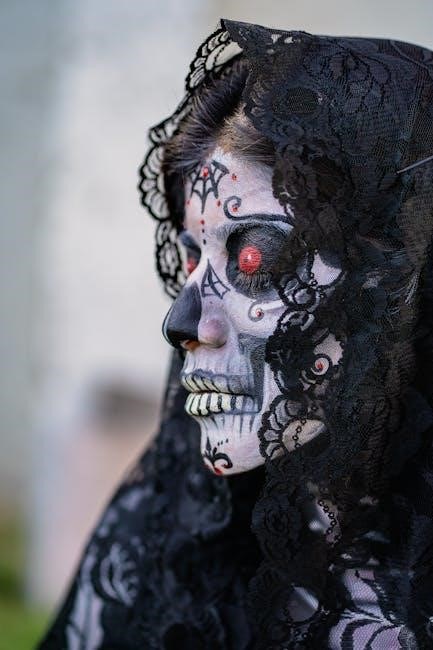
Themes Explored in the Novel
The novel explores fate, honor, guilt, love, and betrayal, delving into societal expectations and human emotions through its intricate narrative and complex characters.
3.1 Fate and Destiny
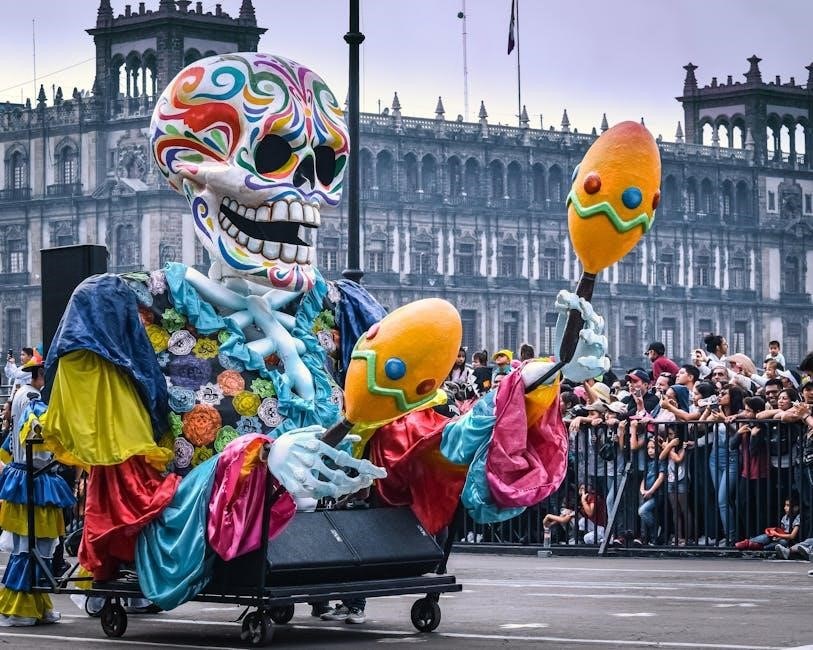
The novel delves deeply into the themes of fate and destiny, portraying them as inexorable forces that shape the lives of its characters. Santiago Nasar’s death is foretold from the beginning, creating an atmosphere of inevitability. The townspeople, aware of the prophecy, fail to intervene, highlighting the powerlessness of individuals against fate. The Vicario brothers, driven by a sense of honor, fulfill the prophecy, further emphasizing the idea that destiny cannot be altered. Marquez’s narrative intertwines fate with free will, leaving readers to ponder whether the characters’ choices are truly their own or part of a predetermined course. This duality underscores the tragic essence of the story.
3.2 Honor and Shame in Society
In Chronicle of a Death Foretold, honor and shame are central themes, driving the characters’ actions and societal expectations. The Vicario family’s reputation is tarnished when Angela is returned to her parents, deemed unfit for marriage due to her loss of virginity. This disgrace compels her brothers to avenge the family’s honor, leading to Santiago Nasar’s tragic death. The novel critiques the rigid societal norms that equate a woman’s virginity with family honor, while men are expected to restore it through violence. This toxic dynamic highlights the destructive power of patriarchal values and the suffocating role of societal judgment in shaping individual destinies.
3.3 Guilt and Responsibility
The novel explores the themes of guilt and responsibility through the tragic events surrounding Santiago Nasar’s death. The Vicario brothers, driven by a sense of honor, take responsibility for avenging their sister’s shame, believing it is their duty. However, their actions lead to devastating consequences. Angela Vicario, though innocent, carries the guilt of her role in the tragedy, while the townspeople share collective responsibility for failing to prevent the murder. The prophecy and societal expectations amplify the sense of inevitability, leaving everyone entangled in a web of moral accountability. Marquez masterfully weaves these elements to highlight the destructive power of unchecked guilt and misplaced responsibility.
3.4 Love and Betrayal
In Chronicle of a Death Foretold, love and betrayal intertwine as central themes, driving the tragic narrative. Angela Vicario’s doomed marriage to Bayardo San Román highlights the societal pressures enforcing marital honor, while her secret love for Santiago Nasar underscores the unattainable nature of true affection. Betrayal is multifaceted: Angela’s betrayal of her husband, the Vicario brothers’ betrayal of Santiago, and the community’s complicity in the inevitable tragedy. The novel explores how love is often sacrificed for honor, and betrayal becomes a catalyst for devastating consequences, revealing the destructive power of unmet expectations and rigid societal norms.

Symbolism in the Novel
The novel is rich in symbolic elements, with yellow representing fate, knives signifying honor and violence, and the bishop’s failed visit embodying moral failure and divine absence.
4.1 The Role of Yellow in the Story
Yellow plays a significant symbolic role in Chronicle of a Death Foretold, often associated with death, decay, and fate. Santiago Nasar is frequently dressed in yellow, a color that reflects his doomed destiny. The use of yellow also evokes a sense of inevitability and tragedy, as it appears in scenes and objects tied to his fate. This color reinforces the novel’s themes of predestination and the inescapability of one’s fate, creating a haunting visual and emotional connection to the story’s outcome.
4.2 The Significance of the Knives
In Chronicle of a Death Foretold, the knives wielded by the Vicario brothers symbolize their relentless determination and the inevitability of fate. The meticulous sharpening and open display of the blades underscore the brothers’ resolve to restore family honor. The knives also serve as a visual reminder of the impending tragedy, reflecting the town’s collective awareness of the doomed outcome. Furthermore, they symbolize the brutal and irreversible nature of violence, as well as the societal expectations that drive individuals to extreme actions. The knives thus embody both the instrument of death and the unyielding forces of fate and honor.
4.3 The Bishop’s Visit and Its Symbolism
The bishop’s visit in Chronicle of a Death Foretold serves as a poignant symbol of divine judgment and moral authority. His presence is anticipated with great expectation, yet he fails to intervene in Santiago’s fate, highlighting the disconnect between religious doctrine and human action. The bishop’s inaction underscores the novel’s exploration of fate and moral responsibility, suggesting that even spiritual leaders are powerless against destiny. The visit also symbolizes societal hypocrisy, as the community seeks validation from the Church while ignoring its teachings. This event reinforces the novel’s critique of religious and social institutions, revealing their inability to alter the course of events.
4.4 The Use of Time and Its Implications
In Chronicle of a Death Foretold, Gabriel García Márquez masterfully manipulates time to heighten the novel’s dramatic tension and explore themes of inevitability. The narrative unfolds non-linearly, jumping between past, present, and future, creating a sense of fatalistic urgency. Time is cyclic, with events repeating in a way that underscores the fated nature of Santiago’s death. This structure also allows for a deep exploration of the characters’ motivations and the societal norms that drive the story. The manipulation of time emphasizes the inexorable march toward tragedy, leaving readers with a profound sense of the unavoidable collision of fate and human action.
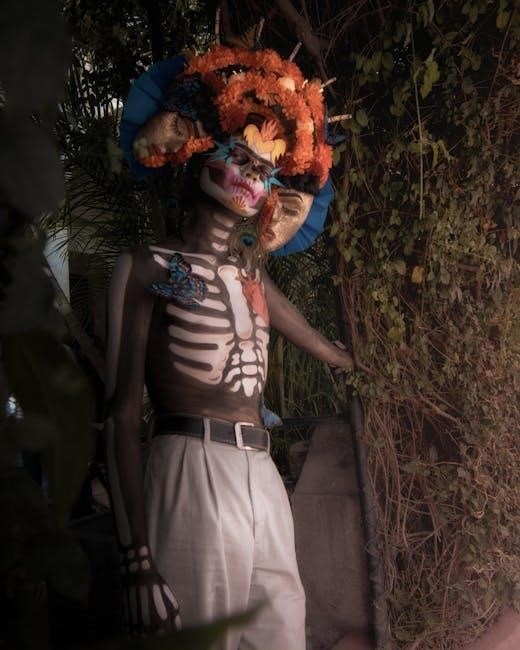
Character Analysis
The novel’s characters, including Santiago Nasar, the Vicario brothers, Angela, and Bayardo, each embody distinct traits, driving the narrative’s exploration of fate, honor, and love.
5.1 Santiago Nasar: The Protagonist
Santiago Nasar, the protagonist of Chronicle of a Death Foretold, is a young, wealthy, and charismatic man whose life is marked by both privilege and tragedy. Known for his extravagant lifestyle and passion for hunting, Santiago embodies a sense of recklessness and independence. His fate is sealed when he is falsely accused of dishonoring Angela Vicario, leading to his brutal murder by her brothers. Throughout the novel, Santiago’s character is explored through the perspectives of others, revealing his complexity and the societal expectations that contribute to his demise. His story serves as a catalyst for exploring themes of honor, fate, and justice.
5.2 The Vicario Brothers: The Antagonists
The Vicario brothers, Pablo and Pedro, are driven by a rigid sense of honor after Angela’s public shaming. Their decision to avenge their family’s reputation leads to Santiago’s tragic fate. Pablo, the more brutal and impulsive brother, is consumed by anger, while Pedro, though reluctant, feels bound by duty. Their actions are both devastating and inevitable, reflecting the societal pressures placed on masculinity and honor. The brothers’ relentless pursuit of Santiago highlights the destructive power of societal expectations and the blurred lines between justice and vengeance in their minds. Their role in the novel underscores the tragedy of a predestined outcome.
5.3 Angela Vicario: The Suffering Bride
Angela Vicario, the bride at the center of the tragedy, is a complex figure forced into a marriage to restore her family’s honor. Her discovery on her wedding night that she is not a virgin leads to public humiliation and her husband’s immediate rejection.
Her fate is sealed when her brothers vow to avenge the family’s honor, setting the tragic events in motion. Angela’s character embodies the societal pressures placed on women, as she is denied a voice in her own destiny.
Despite her suffering, Angela remains a silent yet pivotal figure, enduring the consequences of a rigid societal code. Her story highlights the oppressive norms governing women in a patriarchal society.
5.4 Bayardo San Roman: The Enigmatic Groom
Bayardo San Román is portrayed as a mysterious and charismatic figure whose actions drive the plot. His arrival in the village with a shroud of secrecy captivates everyone. Despite his charm, his decision to marry Angela Vicario and his subsequent rejection of her due to her lack of virginity showcase his rigid adherence to societal norms of honor. His character remains enigmatic, as his true motives and emotions are never fully revealed. The novel leaves many questions about his past and his true intentions, adding to the intrigue surrounding his role in the tragic events. His presence symbolizes the destructive power of pride and societal expectations.

The PDF Version of the Book
The PDF version of Chronicle of a Death Foretold offers a convenient and accessible way to experience Marquéz’s masterpiece, preserving the original formatting and readability on various devices.
6.1 Advantages of the PDF Format
The PDF version of Chronicle of a Death Foretold offers several advantages, including portability and accessibility across multiple devices. It allows readers to carry the book effortlessly, ensuring uninterrupted reading experiences. The format maintains the original layout and design, preserving the author’s intended presentation. PDFs are also easily shareable and storage-efficient, making them ideal for digital libraries. Additionally, the text can be searched and highlighted, facilitating study and analysis. The ability to adjust font sizes enhances readability, catering to diverse preferences. Overall, the PDF format provides a convenient and flexible way to engage with Marquéz’s masterpiece, ensuring its timeless story reaches a broader audience while maintaining its literary integrity.
6.2 How to Access the PDF
To access the PDF version of Chronicle of a Death Foretold, visit reputable eBook platforms like Amazon Kindle, Google Books, or Kobo. You can also search for free downloads on academic or library websites, ensuring the source is legal and trustworthy. Additionally, many libraries offer digital copies for borrowing. If purchasing, select the PDF format during checkout. Always verify the file’s quality and compatibility with your device before downloading. For optimal reading, use PDF viewers like Adobe Acrobat or Foxit Reader, which offer features like bookmarking and zooming. This ensures a seamless and enjoyable reading experience.
6.3 Tips for Reading the PDF
For an optimal reading experience of Chronicle of a Death Foretold in PDF format, ensure your device has a PDF reader installed. Adjust font size and brightness for readability. Use bookmarks to track progress and highlight key passages. Take notes digitally for deeper analysis. Rotate the screen for a better layout on mobile devices. Download the PDF beforehand for offline access. Avoid distractions by using full-screen mode. Consider adjusting night mode settings for evening reads. Finally, ensure the PDF is high quality to enjoy the text without eye strain.
- Use bookmarks for easy navigation.
- Highlight important quotes or themes.
- Adjust font size for comfort.
- Enable night mode for evening reading.
- Take digital notes for analysis.
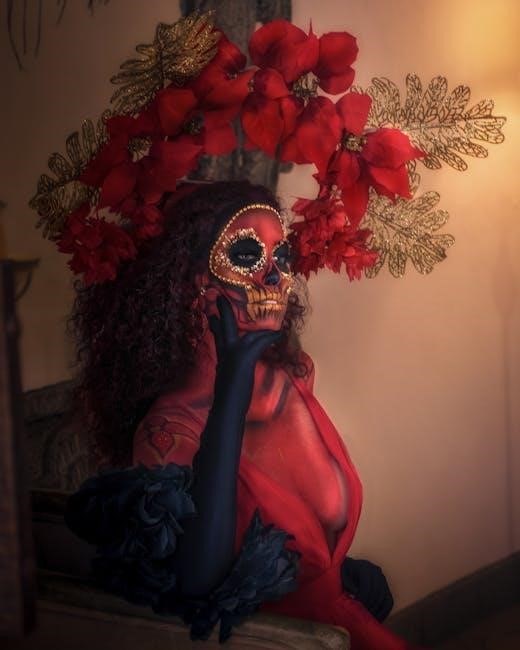
The Author’s Style and Influence
Gabriel García Márquez’s unique style combines magical realism with profound emotional depth, influencing countless writers and shaping modern literature with his lyrical and evocative narrative techniques.
7.1 Gabriel Garcia Marquez: A Literary Giant
Gabriel García Márquez, born in 1927 and passing away in 2014, was a Colombian novelist, journalist, and screenwriter. Renowned for his magical realism, he captured the essence of human experience through extraordinary narratives. His works, such as One Hundred Years of Solitude and Chronicle of a Death Foretold, blend the supernatural with everyday life, creating unforgettable stories. García Márquez’s writing often explored themes of love, solitude, and fate, resonating deeply with readers worldwide. His unique style and profound influence earned him the Nobel Prize in Literature in 1982, solidifying his legacy as one of the most important literary figures of the 20th century.
7.2 Magical Realism in the Novel
In Chronicle of a Death Foretold, Gabriel García Márquez masterfully employs magical realism, blending the mundane with the extraordinary. The novel’s prophecy-driven narrative, where Santiago’s fate is foretold yet inescapable, exemplifies this style. Elements like omens and dreams seamlessly integrate into the realistic setting, creating a world where the supernatural is accepted as normal. The Vicario brothers’ unwavering belief in their duty, driven by a mix of honor and superstition, highlights the fusion of cultural norms with magical elements. This blending enhances the exploration of fate and societal expectations, making the narrative both hauntingly real and mysteriously inevitable, thus enriching the story’s emotional and thematic depth.
7.3 The Author’s Use of Language
Gabriel García Márquez’s masterful use of language in Chronicle of a Death Foretold creates a unique narrative voice, blending poetic lyricism with stark realism. His prose is rich in imagery, with vivid descriptions that immerse readers in the story’s world. The author employs a non-linear storytelling style, weaving past and present seamlessly. His language often carries a rhythmic quality, enhancing the novel’s emotional depth. Magical realism is infused naturally, blurring the line between the ordinary and the extraordinary. García Márquez’s precise yet evocative language not only conveys the characters’ emotions but also reflects the cultural and social fabric of the setting, making his writing both powerful and unforgettable.
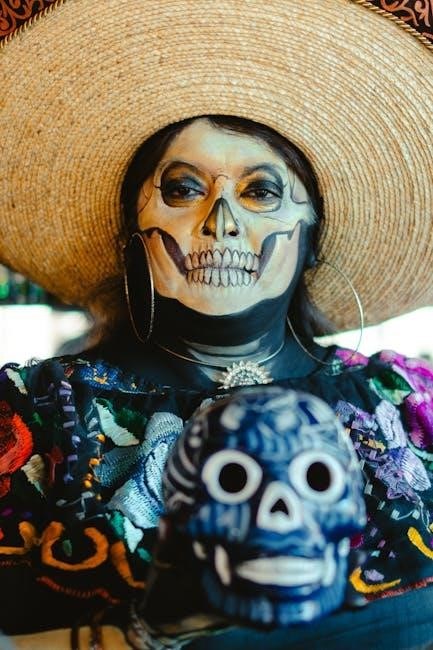
Reception and Impact
Chronicle of a Death Foretold received widespread critical acclaim for its unique narrative style and exploration of fate. The PDF version has enhanced its global accessibility and influence, making it a timeless classic in magical realism.
8.1 Initial Reception of the Book
When Chronicle of a Death Foretold was first published in 1981, it received widespread critical acclaim. Readers and scholars praised its unique narrative style, blending magical realism with a gripping, tragic story. The book’s exploration of fate, honor, and cultural norms resonated deeply, sparking debates about its moral and philosophical implications. Many hailed it as a masterpiece of contemporary Latin American literature, further solidifying Gabriel García Márquez’s reputation as a literary giant. The novel’s concise yet powerful prose and its non-linear structure were particularly celebrated, making it an instant classic. Its release marked a significant moment in literary history.
8.2 Cultural and Literary Impact
The novel has had a profound cultural and literary impact, solidifying Gabriel García Márquez’s reputation as a master of magical realism. It has been translated into numerous languages, reaching a global audience and influencing writers worldwide. The book’s exploration of fate, honor, and societal norms resonates deeply, sparking discussions on cultural identity and human behavior. Academically, it remains a cornerstone of literary studies, often analyzed for its unique narrative structure and thematic depth. Its influence extends beyond literature, inspiring adaptations in film, theater, and art. The PDF version has further amplified its accessibility, ensuring its timeless relevance in modern readership.
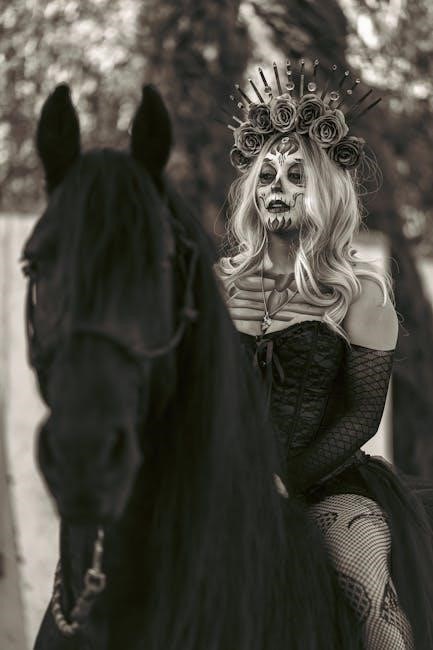
8.3 Comparisons with Other Works
Gabriel García Márquez’s Chronicle of a Death Foretold shares thematic similarities with his other works, such as One Hundred Years of Solitude, in its exploration of fate and societal norms. The novel’s concise narrative and tragic inevitability also draw parallels to works by other authors in the magical realism genre, like Isabel Allende’s The House of the Spirits. However, its unique focus on a single, foretold event sets it apart, offering a gripping examination of human destiny and moral responsibility. This comparison highlights the novel’s place within Latin American literature, emphasizing its timeless appeal and universal themes.
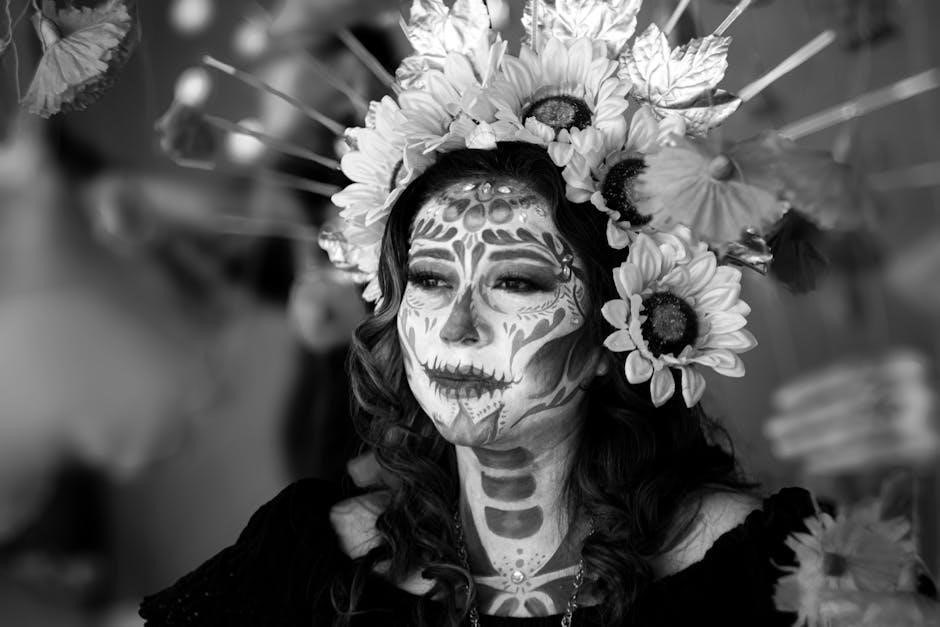
Gabriel García Márquez’s Chronicle of a Death Foretold masterfully explores fate, honor, and societal norms, offering profound reflections on human destiny and moral complexities in its accessible PDF form.
9.1 Final Thoughts on the Novel
Chronicle of a Death Foretold leaves a lasting impact with its exploration of fate, honor, and love. The tragic tale of Santiago Nasar, intertwined with the rigid societal expectations of his community, resonates deeply. The novel masterfully blends magical realism with a gripping narrative, creating a haunting atmosphere that lingers long after the final page. García Márquez’s vivid storytelling and profound insights into human nature make this work a timeless classic. The inevitable violence and moral ambiguity of the characters invite readers to reflect on the consequences of societal norms and individual choices, leaving a profound meditation on destiny and human frailty.
9.2 The Timeless Relevance of the Story
The narrative of Chronicle of a Death Foretold remains universally relevant due to its exploration of fate, cultural norms, and human frailty. The story transcends time, resonating with readers across generations. Its themes of honor, guilt, and destiny are timeless, reflecting the complexities of human nature. Gabriel García Márquez’s unique storytelling weaves magical realism with harsh reality, creating a tale that captivates and provokes reflection. The PDF version ensures accessibility, allowing modern readers to engage with this profound exploration of societal expectations and personal responsibility. The novel’s enduring appeal lies in its ability to evoke emotions and spark dialogue about universal truths.
